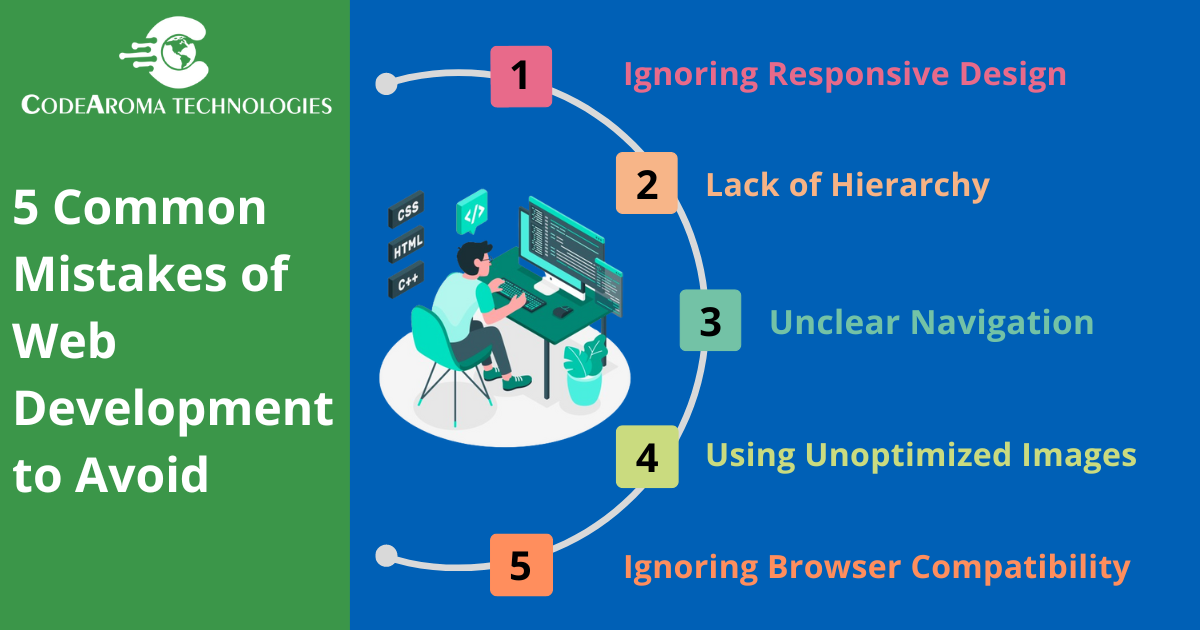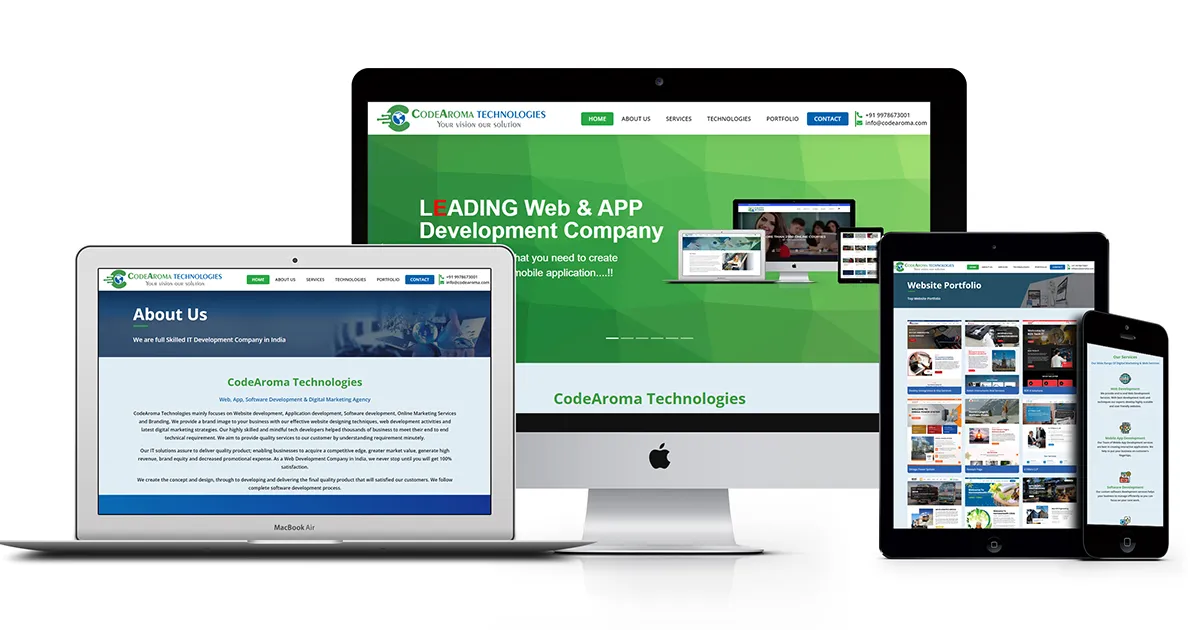5 Common Web Development Mistakes and How to Avoid Them

5 Common Web Development Mistakes and How to Avoid Them
5 Common Web Development Mistakes
➢ Ignoring Responsive Design
➢ Lack of Hierarchy
➢ Unclear Navigation
➢ Using Unoptimized Images
➢ Ignoring Browser Compatibility
❖ Conclusion
Introduction:
In today’s digital era, a well-designed website is crucial for any business or company. It’s your online storefront, your online presence, and sometimes, your first impression. But with so much to consider during website development, even seasoned professionals can fall into common traps. This blog post will explore five common web development mistakes and guide you on how to avoid them, ensuring your website delivers an optimal user experience.
5 Common Web Development Mistakes:
1. Ignoring Responsive Design:
How individuals connect to the internet has undergone a significant transformation. In 2022, more than 58% of worldwide website traffic was attributed to mobile devices. If your website isn’t responsive, meaning it doesn’t adapt its layout to different screen sizes, you’re losing a large chunk of your potential audience. If Users on smartphones and tablets are met with clunky interfaces, unreadable text, and frustrating navigation, it will lead them to bounce off your site quickly.
Solution: Choose responsive design techniques from the get-go. Implement CSS media queries to adapt layouts, fonts, and images according to screen size. Use frameworks such as Bootstrap or Foundation to simplify this procedure.
2. Lack of Hierarchy:
A website without a clear hierarchy is like a cluttered room; it’s overwhelming and difficult to navigate. Information should be presented to guide users towards the most important content. This means using headings, subheadings, bullet points, and white space to create a visual hierarchy that directs the user’s eye and helps them understand the importance of different elements.
Solution: Plan your website’s information architecture carefully. Group related content together, utilize clear and concise headings and leverage white space to create visual separation.
3. Unclear Navigation:
Imagine entering a store where you need help finding the exit or the products you’re looking for. A perplexing navigation system can deter website visitors. Aim for a straightforward, intuitive navigation menu that enables users to locate desired information swiftly and effortlessly.
Solution: Limit the number of navigation options to the most essential ones. Employ clear and concise labels for every menu item. Ensure consistency in placement and design across all pages.
4. Using Unoptimized Images:
Images are powerful tools for enhancing your website’s visual appeal and storytelling. Nevertheless, oversized and unoptimized images can considerably hinder your website’s loading speed. This not only frustrates users but also hurts your search engine ranking.
Solution: Compress images before uploading them to your website. There are many free online tools and plugins available to help you achieve this. Consider using alternative image formats like JPEG or WebP, which offer better compression without sacrificing quality.
5. Ignoring Browser Compatibility:
While most users stick to a few popular browsers, it’s important to ensure your website functions properly across different browsers and devices. Inconsistencies in layout, functionality, or styling can lead to a negative user experience and lost conversions.
Solution: Test your website thoroughly on a variety of browsers and devices during development. Utilise browser developer tools to pinpoint and resolve any compatibility issues. Consider using cross-browser testing services to streamline this process.
Conclusion:
By avoiding these common mistakes, you can create a website that is not only visually appealing but also user-friendly and effective in achieving your goals. Remember, a well-developed website is an investment that pays off in the long run, attracting visitors, converting leads, and enhancing your online brand reputation.




